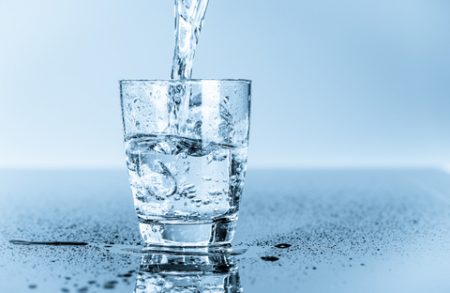In Danish Study, Higher Trace Levels of Lithium in Drinking Water in Certain Regions Do Not Seem to Prevent Bipolar Disorder
Previous studies have found that trace levels of lithium that occur naturally in the drinking water of certain regions are associated with lower rates suicide. Preliminary studies have also shown that lithium in drinking water is associated with lower dementia rates. The trace levels seen in drinking water are many hundreds of times lower than clinical doses of lithium prescribed for bipolar disorder, but they vary greatly according to locality.
A new study by researcher Lars Kessing and colleagues investigated whether chronic exposure to lithium in drinking water might protect against bipolar disorder, but found no evidence that this is the case in Denmark.
In an article published in the journal Bipolar Disorders in 2017, Kessing and colleagues describe findings from their analysis of data on 14,820 patients with a diagnosis of mania or bipolar disorder and (for each participant with bipolar disorder) 10 other age- and gender-matched control participants totaling 140,311. The researchers were able to look longitudinally at the participants’ exposure to trace levels of lithium in drinking water based on their municipalities of residence.
The investigators hoped to find evidence that greater exposure to lithium was associated with lower rates of bipolar disorder. Kessing and colleagues concluded that trace lithium levels higher than those in Denmark might be needed to find such a result.
Editor’s Note: Clinical studies of lithium treatment for children at high risk for bipolar disorder could help clarify whether even conventional therapeutic levels of lithium could reduce or delay the appearance of bipolar disorder.
Naturally Occurring Lithium in Texas Drinking Water Reduced Alzheimer’s Mortality Rates
Several studies have found that trace levels of lithium that naturally occur in the drinking water of certain regions are associated with reductions in dementia compared to regions with less lithium in the water. The latest such study found that higher trace levels of lithium in certain Texas counties were associated with less mortality from Alzheimer’s disease compared to Texas counties with lower levels of lithium in the water.
The research by Val Andrew Fajardo and colleagues was published in the Journal of Alzheimer’s Disease in 2017. Fajardo’s team obtained 6,180 water samples from 234 of Texas’ 254 counties. They also calculated that there was an increase in the Alzheimer’s mortality rate from the period 2000–2006 to the period 2009–2015. However, regions with higher trace levels of lithium were negatively correlated with this increase, suggesting that the lithium in the water had a protective effect on people in those counties.
The researchers controlled for gender, race, education, rural living, and air pollution. Physical inactivity, obesity, and type 2 diabetes seemed to be confounding factors. Obesity and type 2 diabetes were positively correlated with Alzheimer’s mortality and negatively correlated with lithium levels in drinking water, meaning that it is possible that lithium also protects against these conditions.
Lithium in Drinking Water May Reduce Dementia
New research suggests that higher trace levels of lithium in drinking water can reduce dementia rates in the general population. In a 2017 article in the Archives of General Psychiatry, researcher Lars Kessing and colleagues compared data on 73,731 patients in Denmark with a diagnosis of dementia to 733,653 control participants without this diagnosis between the years 1970 and 2013. They were able to match the data to recorded levels of trace lithium in the drinking water in participants’ municipalities of residence.
Lithium levels in the water ranged from 0.6 micrograms per liter to 30.7 micrograms per liter in 151 different locations throughout Denmark. Compared to those exposed to 2.0 to 5.0 micrograms of lithium per liter of water, those exposed to more than 15.0 micrograms per liter had a lower incidence rate of dementia. However, those exposed to 5.1 to 10.0 micrograms per liter had a higher incidence of dementia. The same relationship was also found between lithium exposure levels and both Alzheimer’s disease and vascular dementia.
The lithium levels in the water were approximately 10,000 to 300 times lower than typical clinical doses (typically 900–1500mg/day, which produce concentrations ranging from 0.6 to 1.2 meq/L in patients’ blood). The minute exposures to lithium in the drinking water occurred over decades in the Danish study, and suggest that there may be long-term positive effects to chronic lifetime exposure to very low lithium levels.
These data follow others regarding exposure to trace lithium. In 2011, researcher Orestes V. Forlenza and colleagues reported in the British Journal of Psychiatry that low dose lithium (150–600mg/day) over a period of one year decreased the progression of mild cognitive impairment compared to placebo, while researcher Marielza Andrade Nunes and colleagues reported in the journal Current Alzheimer’s Research in 2013 that an even smaller dose (0.3mg/day) over a period of 15 months slowed the progression of Alzheimer’s dementia. Thus, low or microscopic doses consumed over long periods could slow cognitive deterioration.
Trace Amounts of Lithium in Drinking Water Associated with Lower Suicide Rates in Men
Studies in Japan, Austria, and Texas have reported that trace amounts of lithium in drinking water are associated with lower suicide rates. A new study seeks to clarify these findings by removing any statistical factors other than lithium levels that could produce these results.
The study, published in the Journal of Clinical Psychiatry, collected 434 lithium samples in drinking water over three years, and compared these with suicide rates in the population of 274 municipalities of Kyushi Island in Japan.
The researchers, led by Nobuyoshi Ishii, then controlled for size of population, proportion of elderly people, proportion of one-person households, proportion of people with a college education or more, proportion of people engaging in primary industry, overall unemployment rates, annual marriage rates, annual mean temperature, and annual savings in per person in Japan’s popular postal bank. In places with slightly higher trace levels of lithium in drinking water, there was a lower rate of suicides in men. Suicide rates for women and overall were not significantly associated with lithium levels.





